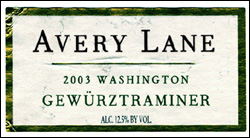Every so often, the fantasyland of wine marketing gets a bracing gust of fresh air from the real world. This week’s double-gold medal for a bottle of Charles Shaw (aka Two-Buck Chuck) syrah in a prestigious blind-tasting competition is bound to get tons of publicity, and confirm many people’s firmly held belief that high-priced wine is not just expensive but a total rip-off as well.
It’s hard to combat that notion because it’s at least half-right. I think that most winemakers would say it’s all but impossible to make a broad spectrum of good wines to retail at $2 a bottle, and in fact, double-gold or no double-gold, most Charles Shaw wine is pretty punk, particularly the whites. Even the brand’s relative success on the red side is due to California’s current huge oversupply of premium grapes; built on the backs of bankrupt growers, in fact.
But when the price point’s a little higher, the relation between quality and price becomes a lot fuzzier, a question of what the winemaker sets out to do more than anything else. Again, most winemakers would agree that it’s actually harder to make a good cheap wine than an expensive one. It’s a lot more tricky to find the right fruit and vinify it successfully if your object is to charge $6 or $7 a bottle rather than $30 or $40.
In Washington, that market has long been dominated by big operations like Ste. Michelle and Columbia, making it hard for a newcomer to compete in the fierce struggle to establish a brand and find a toehold on store shelves, where the competition is particularly fierce. But one new firm has made a start by entering the industry, so to speak, by the side door. For its Avery Lane line, Precept Brands avoided some of the daunting expenses of a startup by putting off the investment in acreage and winery plant indefinitely, contracting for both fruit and vinification with third parties, while concentrating its own efforts on creating a brand and getting it into stores.
The people who founded Precept in 2002 were no newcomers to the wine business: CEO Andrew Browne used to head Corus Brands, maker of Covey Run, Columbia Crest, Paul Thomas, and other familiar labels. The Avery Lane business plan, though, couldn’t be more different from the Charles Shaw model. “Good marketing and a good package can make a sale, but if we don’t put quality in the bottle, the customer will never come back,” says Browne. “We actually try to over-deliver, so they don’t just say, ‘Hey, that’s pretty good wine for the price,’ but, ‘Wow, I can’t believe how good this wine is!'”
With the firm’s first releases in 2003, Browne & Co. got the “Wows” they wanted. The P-I‘s man-about-wine, Richard Kinnsies, wrote, “Of the eight Avery Lane wines, there’s not a clunker in the bunch.” Even more satisfying: The company sold 35,000 cases of wine in its first full year of business. In 2004 the goal is 60,000. Given the quality of their most recent releases (2002 chardonnay and sauvignon blanc, $8 and $7 respectively, and 2003 gewürztraminer and riesling, both $7), there’s little chance they won’t meet it.








